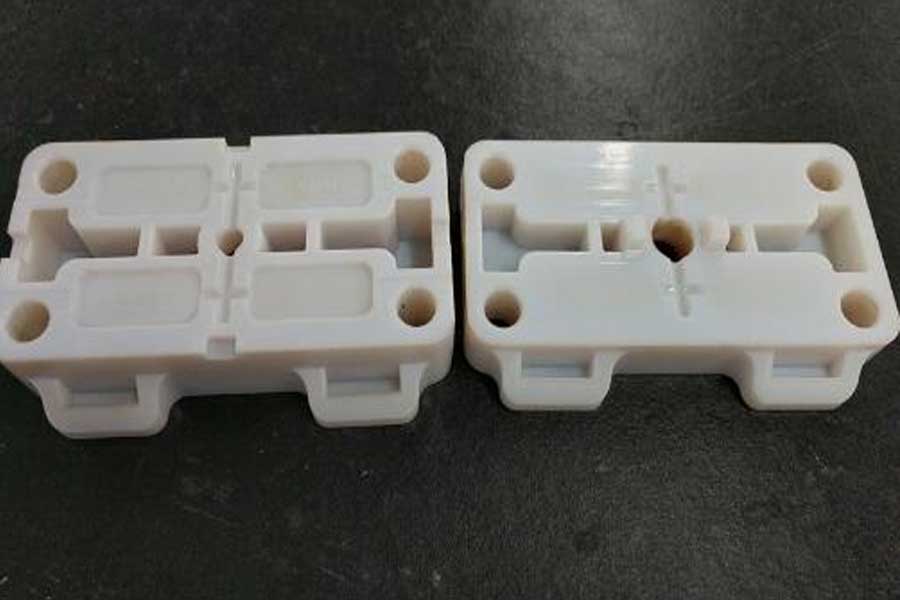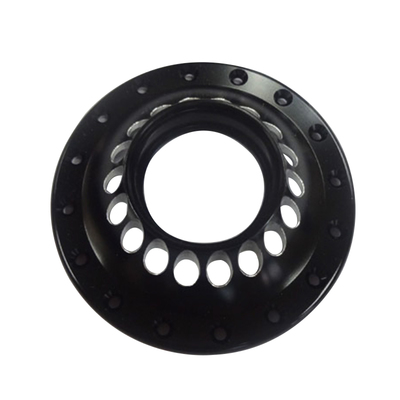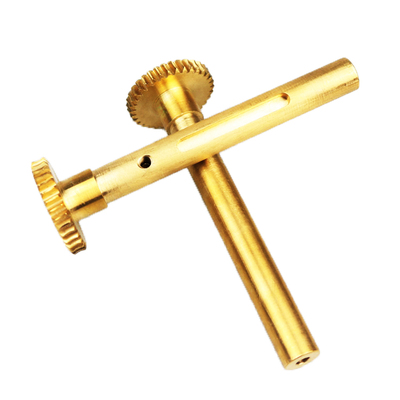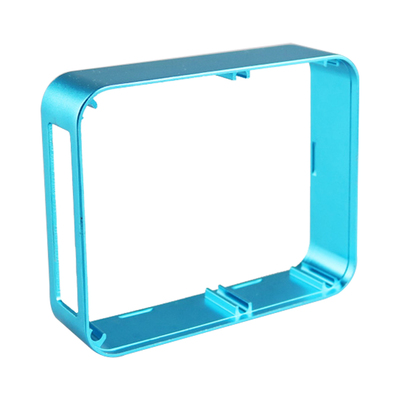3 ways small moldmakers use 3D printing
Byrne Tool + Design, headquartered in Rockford, Michigan, uses FDM machines and the precise Stratasys Fortus 250 MC to enter the 3D printing world, producing prototype parts for its customers, manufacturing fixtures and nesting materials to help the manufacturing process and repair damaged parts Print new parts quickly.
For larger customers, the reduction in cost and delivery time is the driving force for the internal adoption of more additive manufacturing (AM) technology, that is, the Stratasys Polyjet J750 color printer can print molds that can run the actual part material.
A larger customer is Byrne Electrical Specialists, which provides power and data solutions for the home, healthcare, hotel and office furniture industries, such as desktop computer accessories and data communication center products. For a 25-person tool shop, this relationship proved to be a clear advantage, as it involves 3D printed plastic molds.
Putting Byrne Electrical next door and having an experienced processing engineer can simplify the addition learning process. Mitchell said: "As we all know, [Alvin Smelik of Byrne Electrical] can completely form parts with just a few shots." "His experience helped the Byrne Tool team speed up and produce parts in half an hour or less. "The team now applies its internal experience in 3D printing molds to the entire customer base.

The shop runs 3D printed molds on internal presses for its customers because the team has learned how to handle these molds properly. "They are not steel molds. You can't just put 3D printed molds in a press and rely on preset machine parameters to process similar parts made from steel molds," Mitchell said. "If you do this, you will blow up the plastic mold."
This seems to be a long learning process, but it is worth the reward. In the past year, Byrne Tool + Design has increased the number of printing molds produced and continues to encourage customers to follow this route to speed up time to market, eliminate rework and find errors early, so that the project is on track.
1. Simultaneous mold manufacturing
Byrne Electrical's first-to-market mission required the manufacturing team to invest in new technologies to help achieve this goal. Therefore, using its additive technology, the team decided to take a synchronous approach to its manufacturing.
When Byrne Tool and Byrne Electrical start a steel tool project, it will also print molds on the Polyjet machine at the same time. This method allows the tool shop to design, inspect, and print molds in two to three days, and then start shooting parts the next day. Then, when Byrne Tool begins to design the steel mold, Byrne Electrical will remove these parts, assemble the components and start performing the required tests. At this point, Byrne Electrical can identify any errors in the part design, or, if the part is of good quality, they have begun UL and regulatory testing, which helps to bring the product to the market faster. Then, once the workshop has finished building the steel tools, the approval is complete. This simultaneous approach shortened the time to market by approximately three months.
Byrne Tool recently produced a mold with snap details, and Byrne Electrical realized that the mold was not strong enough. "So when we continued to design the mold, we changed the part design, printed a new mold, ran the mold, obtained the part’s company approval, and updated the mold design. As a result, there was no delay in completing the production tool The process saves customers six to eight weeks. Basically, the cost of printing two molds is lower than the cost of engineering changes to the steel mold."
2. Conformal cooling
Another project involves Byrne Tool + Design, which uses conformal cooling in the core through a two-piece construction to create a new production mold for deep conical parts. Nobel Plastics’ core located on the Great Coast of Louisiana uses a metal shell to form the inside of the molded part. Then Byrne Tool 3D prints a plastic inner core with an open conformal cooling channel around its outer wall (with the inner core Full diameter conformal cooling is the opposite). The plastic printing core is placed in the metal sleeve and sealed so that water flows around between the printing core and the metal sleeve and cools the mold in it. Mitchell said: "Compared with the traditional manufacturing process, the cost is reduced by 50%, and the time to print the cooling core is 24 hours, while the delivery time is close to two weeks."
3. Mixed mold design
Byrne Tool also uses a hybrid mold design method that combines real thimble, cast steel bushings and metal screws (some reusable). This helps strengthen the mold and push out the part. The store also put metal sub-inserts into printed plastic molds for more complex designs. Most importantly, the workshop will print the manual load to form the undercut of the part geometry.
"We also designed and manufactured a proprietary mold splitter to evenly separate the two printing halves, thereby preventing uneven mold separation and damage to the mold or molded part," Mitchell said. Here, the workshop uses metal screws in reusable blocks that are fixed to the printing mold in the splitter.
Byrne Electrical's first-to-market mission required the manufacturing team to invest in new technologies to help achieve this goal. Therefore, using its additive technology, the team decided to adopt a synchronous method of manufacturing.
The main points of designing 3D printing molds
Byrne Tool spent several years learning how to run 3D printed molds, and occasionally broke several times, but they were able to make changes and reprint with Polyjet machines soon. "Initially, we used a lot of plastic (6 inches thick, 8 x 8 inches molds) to build large molds and realized that this was a waste of very expensive plastic. Therefore, we reduced the number of molds." Byrne Tool's standard printing mold thickness It is 2.23 inches thick, which is the minimum stack height of its compression molding machine. The same concept of printing molds can be applied to aluminum molds for larger parts. To save money on larger parts, they use the same mold design but use aluminum machining.
Printing mold design skills:
Try to use a larger radius on the part, because every sharp edge in the part design will add a lot of stress to that corner of the mold during the injection process, which can cause the mold to crack.
When running flame-retardant polycarbonate similar to glue, take out about 15 parts from the printed digital ABS mold.
The height of the details in the mold should not be greater than the height of the base to prevent cracking. If the mold detail requires a higher height than the base, consider using steel inserts to form the detail.
Take it easy. The process of obtaining the correct part design, mold design and processing methods to produce high-quality parts is a learning process.
Mitchell said: "It seems to be a long learning process, but the rewards are worth it." In the past year, Byrne Tool + Design has increased the number of printing molds they produce (from 2017 to 2018) 133%) and continue to encourage customers to follow this path to speed up time to market, avoid rework and avoid early error detection to maintain project progress.
Mitchell believes that Byrne Tool's 3D printing experience enables them to be ahead of their competitors in adding technology, so the company can continue to grow as technology develops. Next on the agenda: metal 3D printing of sub-inserts to provide finer details and conformal cooling.
Link to this article: 3 ways small moldmakers use 3D printing
Reprint Statement: If there are no special instructions, all articles on this site are original. Please indicate the source for reprinting:https://www.cncmachiningptj.com/,thanks!
 3, 4 and 5-axis precision CNC machining services for aluminum machining, beryllium, carbon steel, magnesium, titanium machining, Inconel, platinum, superalloy, acetal, polycarbonate, fiberglass, graphite and wood. Capable of machining parts up to 98 in. turning dia. and +/-0.001 in. straightness tolerance. Processes include milling, turning, drilling, boring, threading, tapping, forming, knurling, counterboring, countersinking, reaming and laser cutting. Secondary services such as assembly, centerless grinding, heat treating, plating and welding. Prototype and low to high volume production offered with maximum 50,000 units. Suitable for fluid power, pneumatics, hydraulics and valve applications. Serves the aerospace, aircraft, military, medical and defense industries.PTJ will strategize with you to provide the most cost-effective services to help you reach your target,Welcome to Contact us ( sales@pintejin.com ) directly for your new project.
3, 4 and 5-axis precision CNC machining services for aluminum machining, beryllium, carbon steel, magnesium, titanium machining, Inconel, platinum, superalloy, acetal, polycarbonate, fiberglass, graphite and wood. Capable of machining parts up to 98 in. turning dia. and +/-0.001 in. straightness tolerance. Processes include milling, turning, drilling, boring, threading, tapping, forming, knurling, counterboring, countersinking, reaming and laser cutting. Secondary services such as assembly, centerless grinding, heat treating, plating and welding. Prototype and low to high volume production offered with maximum 50,000 units. Suitable for fluid power, pneumatics, hydraulics and valve applications. Serves the aerospace, aircraft, military, medical and defense industries.PTJ will strategize with you to provide the most cost-effective services to help you reach your target,Welcome to Contact us ( sales@pintejin.com ) directly for your new project.

- 5 Axis Machining
- Cnc Milling
- Cnc Turning
- Machining Industries
- Machining Process
- Surface Treatment
- Metal Machining
- Plastic Machining
- Powder Metallurgy Mold
- Die Casting
- Parts Gallery
- Auto Metal Parts
- Machinery Parts
- LED Heatsink
- Building Parts
- Mobile Parts
- Medical Parts
- Electronic Parts
- Tailored Machining
- Bicycle Parts
- Aluminum Machining
- Titanium Machining
- Stainless Steel Machining
- Copper Machining
- Brass Machining
- Super Alloy Machining
- Peek Machining
- UHMW Machining
- Unilate Machining
- PA6 Machining
- PPS Machining
- Teflon Machining
- Inconel Machining
- Tool Steel Machining
- More Material





